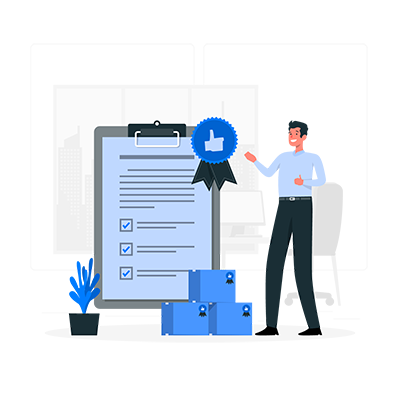“When the wind of change blows, some build walls, while others build windmills...”
The wind is not just blowing at a faster pace but has changed its direction. Indeed, how family businesses deal with change is vital to their existence. It is the question of existential crisis.
Family business leaders are fast realizing the need for business transformation as fast changing customer behaviour is changing the way businesses are managed. Family businesses are being pushed towards a different business landscape. With this sudden thrust of push and pull at play, there are more dramatic questions posing the family stage.
Should family businesses perpetuate the legacy of the past or should they promote a strategic shift to realign with the future? Hence, the essential question of what kind of transformation is needed for the continuity of family business and more important to what extent? Is family businesses are able to reinvent them, yet retain the entrepreneurial spirit they were founded on?
Transformation requires organizational capability and capacity to make it happen; otherwise it has the tendency to fold faster than it started to unfold. The people within the organization need to understand the urgency of change and how to measure the factors of success. For family businesses, the journey of transformation takes on another dimension because the personal nature of family relationships adds another layer of complexity. Conflicts can arise when family and business goals are not aligned.
The authentic leadership in family businesses is demonstrating sufficient care for stakeholders’ management during such times of rapid change. The increased focus on how businesses operate plays to the strength of so many family businesses and their link to social causal and serving for greater good of the societal purpose.
Family businesses share two characteristics in common as they come from entrepreneurial background and they have a long-term perspective. However, an increasingly volatile business environment is putting them to litmus test.

The quintessential question of what is created for society, and how that relates to the business plan and the transformation program, still need special attention. We need to pay attention to the way family businesses are undergoing a change…
Family businesses have their own family members as their stakeholders and are very closely held organizational setup. Literally management was a family affair. The scope and scale of managing stakeholders in family businesses was limited and confined to family members. Things have changed with fast changing business environment. There is a greater focus on broadening the scope of management and expanding the scale of stakeholder’s engagement. Just not the internal but the external stakeholders need to upgrade their capabilities and align with the demand of new setup. Right from employees as internal stakeholders to suppliers as external stakeholders to public agencies like government regulators to private institutions like research organization. Now family businesses are paying more attention to accepting the need for change and embracing the essence of change.
Family businesses are so much about the linkage between generation and the leverage they derive from generation to generation. There is a legacy and there is solid foundation with generation of doing similar business. But with new generation seeing things differently, they are ready to take up things beyond the boundaries of the traditional business and build new business edifice. They are ready to venture out and conquer new frontiers of business. There is a balanced collaboration between the old generation and the new generation. The new generations are aggressive and the old generations are progressive. This was not the case earlier. As both are open and ready to change, the collaboration is much more robust and gaining stronger momentum with each passing day.
Change happens with people and people have to change for the business organization to change. Talent is at the crunch of people management. Internal talent will not always be sufficient to manage the show. Hence, we need external talent to galvanize that significant jump in business growth. Family business had huge reservations for hiring professionals. They were habituated to operating with trusted lieutenants. They have joined them during the initial phase of creating the business and that has become as blinkers to look beyond. The irony is that business grows but many of those trusted people didn’t grow their capabilities concurrently. More so, many of them have limited capacity and they have done their best to serve at their optimum level. Now leaders in family businesses are open to welcome the external talent. There is more willingness to bring in external talent, in part to deliver on transformation designed to exploit the greater opportunities offered by data science and data technology.
Transformation is a journey, with several possible paths leading to the same destination. While family business should choose the path most suited for them, they should also give themselves some latitude to wander from that path should the need arise.
Family businesses will need to future-enable their businesses so that they can pocket greater opportunities, extend the gap with their competitors and withstand external shocks, all while continuing to preserve their rich legacies. This could mean reengineering existing processes and removing roadblocks that are preventing their businesses from maximizing their potential.
The fast changing business landscape poses challenges but also offers opportunities for family businesses to reassess and readjust their business strategies. In particular, digital transformation can help them do things better, smarter and faster.
The era of disruption is descending upon family businesses and this is where next gens can play a role in taking up the innovation mantle, driving business growth, and professionalizing the business. They can bring in fresh perspectives to the organization when it comes to spearheading transformation.
Indeed, next gens are well positioned to do so, given that they are well educated, more digital savvy and possess a global outlook with extensive networks. However, next gens may not have all the capabilities or skills to lead the transformation agenda. Therefore, they need the expertise and support of nonfamily professionals who have the requisite skill sets and experience to guide the business to the next stage, as it embarks on its digital transformation journey.
As the bridge between the old and the new, the past and the future, next gens can play a role in the future enablement of the family business. The future success of family businesses will rest on how well they can harness the benefits of digital technology to capture competitive advantages and thrive in the marketplace.
In today’s world, there is a greater degree of disharmony in the work-life balance. There is this imperative need to separate the personal life from the professional work but that cannot always be the case with family run businesses. As the basis of those businesses has its deep root and those seeds were germinated from the sprouts of family tree. These things cannot be completely separated but their fundamental association can always be completed by duly nurturing and harmonizing their dual relationship. It has to learn to respect the overlapping boundaries between management and ownership.
There is always this problem of communication in every organization and in case of family businesses; the problem seems to be more pronounced. Unless it is acknowledged and proactively addressed, the problem continues to persist and fester. The business keeps growing as do the family, and with time there is an increased gap between the different family members and the growing business. Things appear to be restricted and communication channels closed. Hence, it is essential to open up and have more often than not, the open discussion on various developments in the organization.
The family has the power and talents to get the business started and grow it successfully. First generation has the full steam and the second generation retains substantial amount of that steam power but as it comes to third and thereafter, the steam power is not sufficient to support such a growth. It needs a paradigm shift in power generation and the organization needs fresh talent and professionalism to drive the next phase of growth. The shift cannot happen without providing that space for talent to occupy and a system driven setup to nurture that professionalism.
